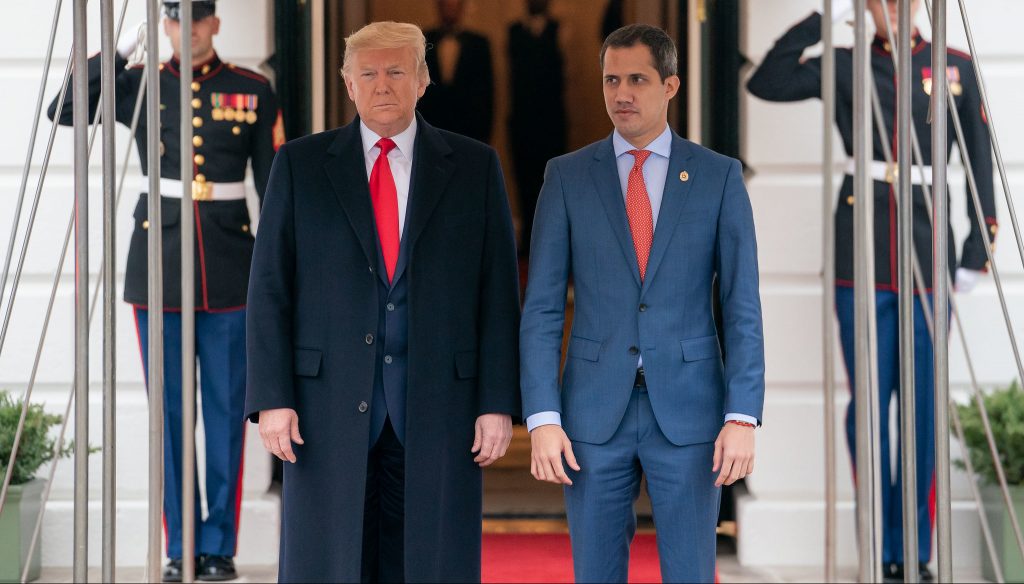
The U.S. president, Donald Trump, has seen the Venezuelan crisis as one of the priorities of his foreign policy in South America. Since the very beginning, the Republican administration has managed to isolate the regime of Nicolás Maduro, and this has weakened the Venezuelan dictatorship for the first time in over 20 years.
After assuming the presidency in January 2017, Donald Trump’s approach was clear: to have one of the most destructive regimes in the region on the ropes. The Chavista regime operates in a territory full of corruption and chaos, which has led to the exodus of more than five million Venezuelans around the world, according to the United Nations.
Knowing this precedent, Trump intensified his struggle against the regime by issuing his first sanction against Tareck El Aissami, one of the strategic chips of Chavismo, who has been linked to drug trafficking. The move consisted of the cancellation of his visa, confiscation of his property, and prohibition of financial transactions- an action more astute than those of his predecessor, Barack Obama, who issued his last sanction in 2015.
Besides El Aissami, eight judges of the Chavista Supreme Court of Justice were sanctioned for usurping the powers of parliament. This strategy took on greater dimensions when Maduro created the illegitimate National Constituent Assembly (ANC). In response, Trump issued direct sanctions against the Maduro regime, including a ban on negotiations on new debt and bond issues.
In August 2019, when the U.S. President signed an executive order to freeze the property and assets of the Venezuelan dictatorship and any individual assisting officials affected by the order, it resulted in the paralysis of certain services. An example of this was that the telecommunications giant AT&T left the country this year and closed its DirecTV television business in Venezuela.
Earlier, in October 2019, the popular U.S. software company Adobe had ended its operations in this territory. However, after an agreement was reached, operations resumed.
How Trump further weakened the regime
In terms of surveillance and military strategy, Trump has been proactive. First, he appointed Elliott Abrams as the special envoy for Venezuela. The coordinator has worked side by side with the Venezuelan opposition since he took office.
Through Abrams, the United States supported all attempts that could trigger a break within the Venezuelan Armed Forces. For instance, the U.S. supported the strategies to bring in humanitarian aid in February 2019, as well as the call for rebellion in April of the same year.
Mike Pompeo, U.S. Secretary of State, has also toured Latin America, where he included Venezuela and its immigration crisis as a key issue on his agenda. To help alleviate the crisis, the Trump Administration has provided 120 million USD.
The unrestricted support for President Juan Guaidó has been a cornerstone in this crusade of the U.S. government against Chavismo. In January 2019, the Trump administration recognized the legitimacy of the president of the National Assembly, which led to the creation of a coalition of more than 50 countries in favor of this new Venezuelan opposition leader. The interim president was also received at the White House and invited to the State of the Union address.
Trump’s willingness to support the Venezuelan opposition has been very clear. However, with the upcoming U.S. elections, this support has not been as reciprocal due to Guaidó’s lukewarm speeches on the subject.
Recently, Guaidó thanked the support that the Donald Trump administration has given to the interim, the same gesture he made to the Democrats who have raised their voices on this issue. Nevertheless, the interim president hinted in an interview that no matter who is in the White House, Venezuela will have the support of the United States.
 Versión Español
Versión Español












